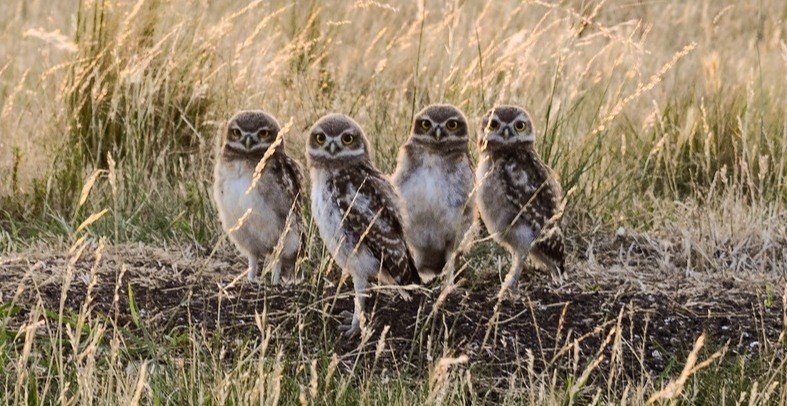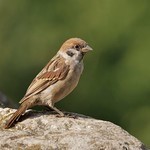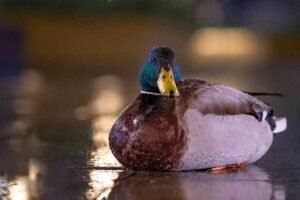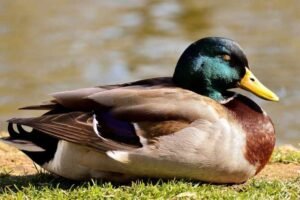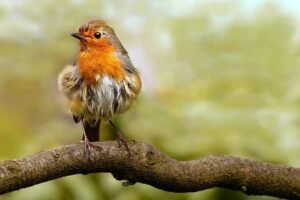Wild birds can live for periods of under 2 years, or as long as 68 years or more. This depends on the species, but larger birds tend to have longer lifespans.
In my travels outdoors, I’ve noticed something about the birds I see. That is, while I can identify the male, female, and juvenile examples of several bird species — I can not really tell what the age of these birds is once they reach adulthood.
This led me to think about bird aging, the oldest bird out there in the wild, and the lifespan of different birds, from songbirds to seagulls. In short, how long do wild birds live? I’ve always thought that the answer to this question must be a little difficult to record.
Well, it turns out that this is actually the case — wildlife experts have a somewhat hard time knowing the exact lifespans of wild birds, even the ones they tag and record. This article, however, will elaborate on the known lifespan of wild birds, as well as detail different species and how long they live.
HOW LONG DO WILD BIRDS LIVE?
The broad answer to the question “how long do wild birds live?” is that it depends on the species. Different bird species live for different amounts of time, and generally smaller species have shorter lifespans.
For example, the oldest known wild Magnolia Warbler (SETOPHAGA MAGNOLIA) — a songbird some 4.3 inches to 5.1 inches in length and 0.2 to 0.5 ounces in weight — was recorded to be aged 2 years, 6 months.
In contrast, the oldest known wild Laysan Albatross (PHOEBASTRIA IMMUTABILIS) PHOEBASTRIA IMMUTABILIS) a seafaring bird that can reach 31.1 to 31.9 inches in length, and weigh anywhere from 77.6 to 151.7 ounces, was recorded to be aged 68 years, 11 months.
Other factors in determining wild bird lifespan by species include the number of offspring the birds tend to have, the years it takes for the species to reach adulthood, as well as the flight and habitat preferences of the species.
Bird species that have few offspring tend to live longer lives, as well as species that take a long time to mature into adulthood. Species that dwell in treetops and canopies tend to live longer lifespans, as do those that fly between and nest on islands.
MEASURING WILD BIRD LONGEVITY
Since individual wild birds are difficult to keep track of without tags or bands, the longevity data of different species is often hard to measure. The longest-living examples of a species are normally banded specimens that are found dead, shot, or killed due to disease or predation.
It is also the case that the longest-lived examples of some species are still living: a good number of North American species have been banded previously, captured, and then released after their status (living) has been recorded.
And even with a record of the longest-living members of a wild bird species, this may not be representative of the average lifespan of a species. The Laysan Albatross (mentioned before) may have several members of its species that live longer than 65 years, but this may be relatively unusual.
A 1975 University of New Mexico study found, for example, that the percentage of Laysan Albatross eggs surviving as birds decreased steadily over the course of 4 to 10 years, from 41 to 29 per cent — and then dropped sharply at the end of the second decade to 13 per cent (Fisher, 1975).
The percent of Laysan Albatross eggs surviving as birds dropped to 4.3 percent after the third decade. With just 1.6 percent of eggs surviving after 40 years, the average lifespan of the species is likely 10 to 30 years, or at the very least much shorter than the record 68 years, 11 months.
Wild birds tend to die off from causes other than old age — and this puts a further complication in determining their lifespan. For example, temperate songbirds have a 70 percent chance of being killed annually, a statistic mirrored in the “dropping off” of surviving birds in the Laysan Albatross study.
WILD BIRD LONGEVITY BY SPECIES
With all this in mind, we can review the average wild bird longevity by species. The following list divides wild birds broadly by colloquial type, then gives an example of the longevity of one species in the group mentioned.
SONGBIRDS
1, Robins | 2, Warblers | 3, Starlings |
(TURDUS MIGRATORIUS) lives for a period of two years on average, with the longest living specimen known to live about 14 years. | The Prothonotary Warbler (PROTONOTARIA CITREA) lives an average of 8.1 years in the wild. | The European Starling (STURNUS VULGARIS) lives for an average of 2 or 3 years. Record spans of 15 years, 3 months, to 22 years have been recorded. |
4, Finches | 5, Blue Jays | 6, Orioles |
The Eurasian Bullfinch (PYRRHULA PYRRHULA) has an average lifespan of about 2 years. | The Blue Jay (CYANOCITTA CRISTATA) can live an average of 7 years in the wild. | The Eurasian Golden Oriole (ORIOLUS ORIOLUS) has a life expectancy of 1 to 5 years. Life spans of 10 to 14 years have also been recorded. |
7, Thrush | 8, Cardinals | 9, Sparrows |
The Song Thrush (TURDUS PHILOMELOS) has a life expectancy of 3 years on average. | The Northern Cardinal (CARDINALIS CARDINALIS) has an average life expectancy of around 1 year. A lifespan of 15 years, 9 months have been recorded. | The House Sparrow (PASSER DOMESTICUS) has an average lifespan of 3 years. |
10, Pigeons | 11, Doves | |
The Rock Dove (COLUMBA LIVIA) has an average lifespan of 3 years. | The Eurasian Colored Dove (STREPTOPELIA DECAOCTO) has a lifespan of 3 years. |
BIRDS OF PREY
1, Hawks | 2, Eagles | 3, Owls |
The European Sparrowhawk (ACCIPITER NISUS) has a lifespan of about 4 years. | The Golden Eagle (AQUILA CHRYSAETOS) has an average lifespan of 23 years. The North American record is 31 years, 8 months. | The Great Horned Owl (BUBO VIRGINIANUS) has an average lifespan of about 13 to 15 years. It has also reached a record 29-year lifespan in the wild. |
4, Falcons | 5, Ospreys | |
The Peregrine Falcon (FALCO PEREGRINUS) has an average lifespan of about 6 years. The North American record is 19 years, 9 months. | The Osprey (PANDION HALIAETUS) lives an average of 9 years in the wild. The North American record is 25 years, 2 months. |
LARGE FLIGHTLESS BIRDS
1, Ostriches | 2, Emus | 3, Cassowaries |
The Common Ostrich (STRUTHIO CAMELUS) can live as long as 40 to 45 years. | The Emu (DROMAIUS NOVAEHOLLANDIAE) lives about 5 to 10 years in the wild. | The Southern Cassowary (CASUARIUS CASUARIUS) can live 20 to 30 years in the wild. |
4, Rheas | ||
The Greater Rhea (RHEA AMERICANA)has a lifespan in the wild of 10.5 years. |
TROPICAL BIRDS
1, Parrots | 2, Toucans | 3, Hummingbirds |
The Blue-and-Yellow Macaw (ARA ARARAUNA), a South American parrot, can live up to 30 to 35 years in the wild. | The Toco Toucan (RAMPHASTOS TOCO) can live up to 20 years in the wild | The Mexican Violetear (COLIBRI THALASSINUS), a hummingbird species, can live up to 12 years. |
GAMEFOWL AND WATERFOWL
1, Ducks | 2, Geese | 3, Turkeys |
The Mallard (ANAS PLATYRHYNCHOS) lives about 3 years on average. The record for this species is 27 years, 7 months. | The Canada Goose (BRANTA CANADENSIS) lives as long as 10 to 25 years in the wild. The North American record for this species is 33 years, 3 months. | The Wild Turkey (MELEAGRIS GALLOPAVO) lives 3 to 5 years in the wild. |
4, Chickens | ||
The Red Jungle Fowl (GALLUS GALLUS) lives 12 to 14 years in the wild. |
WADING BIRDS
1, Cranes | 2, Egrets | 3, Storks |
The Whooping Crane (GRUS AMERICANA) can live from 22 to 24 years in the wild. | The Great Egret (ARDEA ALBA) can live to about 5 years of age in the wild. The North American record for this species is 22 years, 20 months. | The Painted Stork (MYCTERIA LEUCOCEPHALA) can live to about 20 years of age in the wild. |
4, Herons | ||
The Great Blue Heron (ARDEA HARODIAS) can live up to 15 years in the wild. The North American record for this species is 24 years, 6 months. |
OTHER BIRDS
1, Crows | 2, Ravens | 3, Penguins |
The American Crow (CORVUS BRACHYRHYNCHOS) can live for 7 to 8 years in the wild. | The Common Raven (CORVUS CORAX) live 10 to 15 years in the wild. The North American record lifespan for this species is 22 years, 7 months. | The Emperor Penguin (APTENODYTES FORSTERI) can live up to 20 years in the wild, with some members of the species living as long as 50 years of age. |
4, Pelicans | 5, Albarosses | |
The Great White Pelican (PELECANUS ONOCROTALUS) can live up to 15 to 25 years in the wild. | The Wandering Albatross (DIOMEDEA EXULANS) can live up to 50 years in the wild. |
CONCLUSION
In summary, there is not a set life span for most bird species in the wild. Wild bird species live for different lengths of time in the wild, depending on their size, maturation, breeding characteristics, and habitat.
This is something that I’ve found quite surprising to research, that some birds can live much longer than other animals. With a new awareness of what goes into bird survival and longevity, I can appreciate viewing birds outside that much more.

